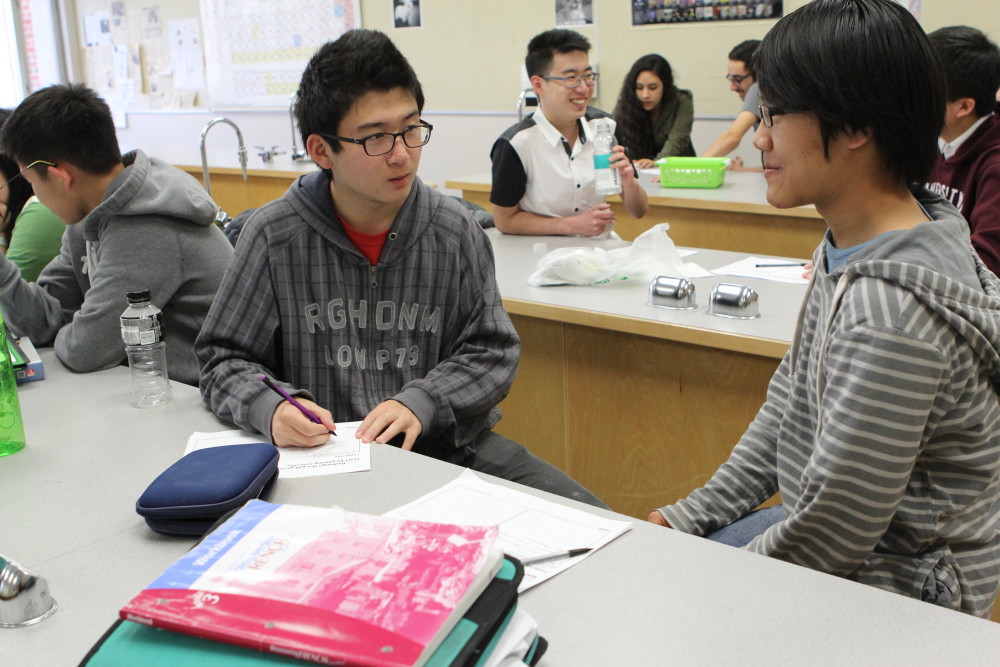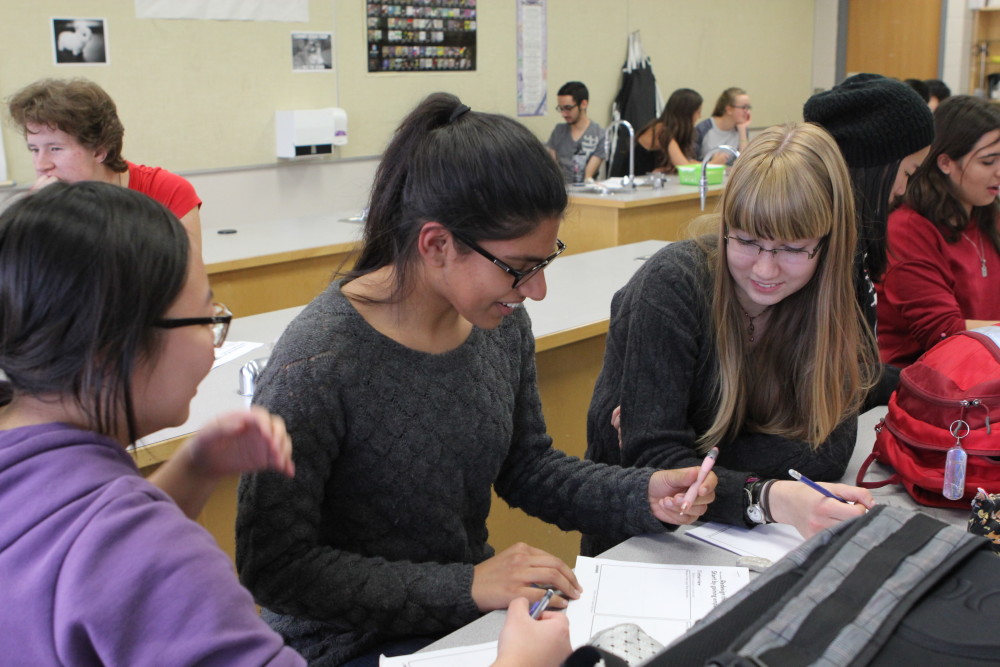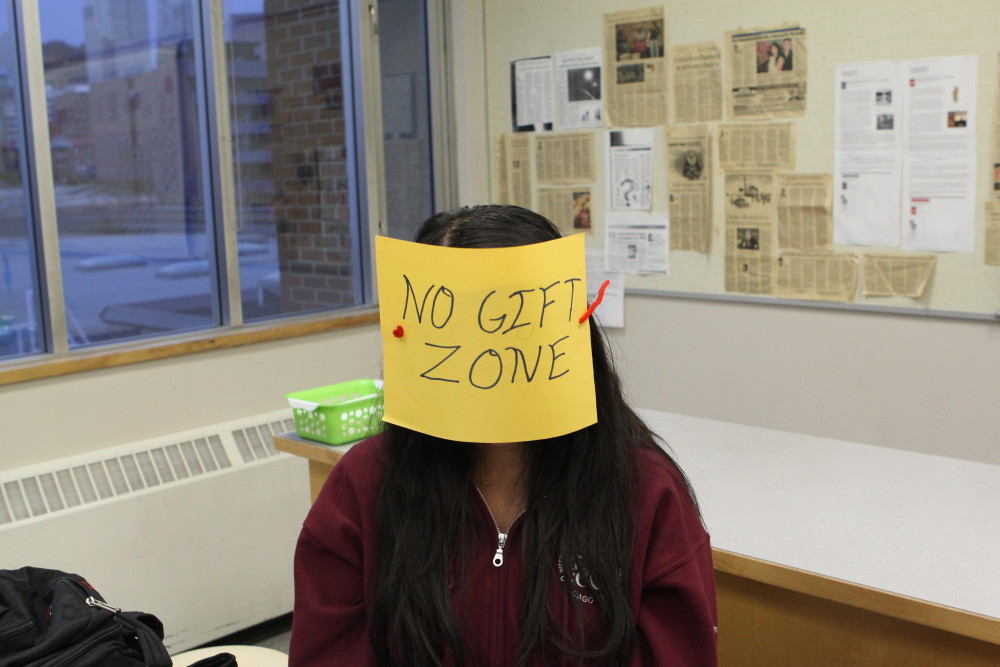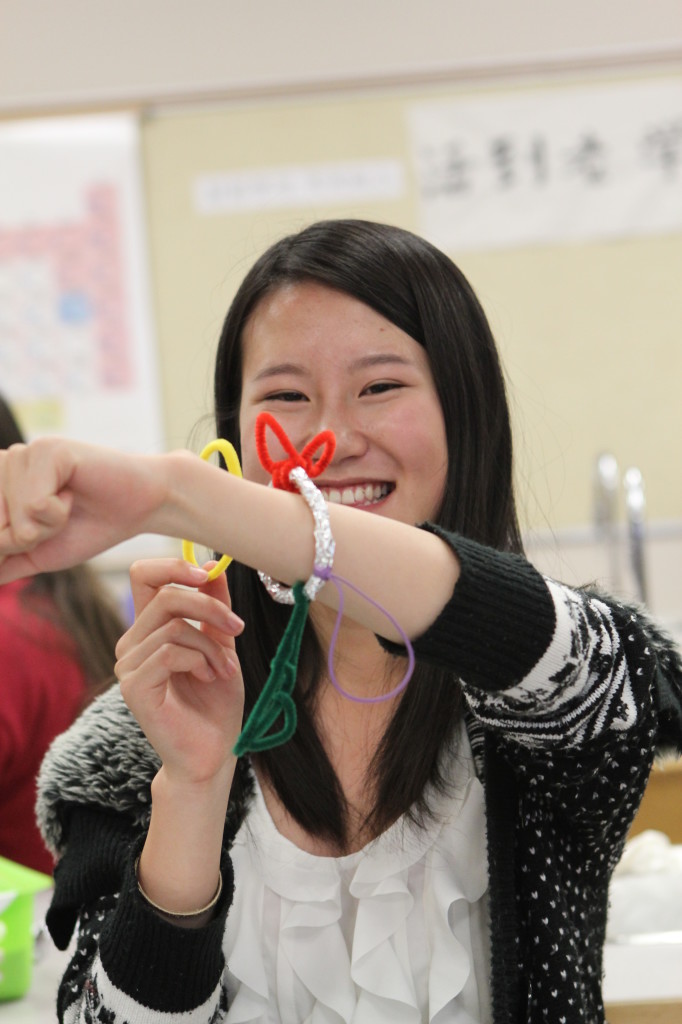Crash Course in Design Thinking at Western Canada High
I recently ran a Crash Course in Design Thinking for Innovation for students at Western Canada High School, helping them gain the confidence to tackle real-world challenges through design.
It was great to be back at my old stomping ground, this time as an instructor sharing my UX design experience. During the workshop, students dove into the design cycle as they tackled a challenge within 90 minutes. Here are some of my learnings as a facilitator:
1. Find a school champion
Navigating a school system can be tricky, and finding a teacher champion who’s excited about your work can make logistics so much easier. My former chem teacher, Jason Arnot, gave me a big helping hand by talking to school admin, securing a space, and gathering interested students. We managed to pull it off with less than a week’s notice, but I recommend reaching out to the school far in advance of running the workshop to save you some stress.
(Meeting up with Jason and his lovely wife, Heather, in Beijing)
2. Make it relevant
Design thinking is a relatively new concept, and unsurprisingly, most students had never heard of it. Instead of diving right into an activity, give them some context with a few examples of how design thinking can affect their every day life. I chose a variety of case studies ranging from mobile apps to medical devices, including the PlayPump to illustrate the negative effects of poorly conceived design.
Students were especially excited after watching the IDEO Shopping Cart video, which I used to demonstrate each stage of the design process. They pointed out how cool it was to see collaboration within a team of people with such diverse backgrounds.
Aim to make this part of the workshop more discussion-based rather than a lecture format. Students tend to internalize concepts better when critical thinking is involved. In hindsight, it would have been better for me to show less design examples and prompt students to discuss instances of design in their own lives.
IMG_1483
3. Choose the right design challenge for your audience
The Stanford d.school provides some excellent workshop resources, including activity ideas and even a music playlist to set the mood. The facilitator notes come with discussion prompts, and workbooks can be printed to guide students through the activity.
I decided to run with the Gift-Giving Project where students are asked to redesign the gift-giving experience for their partners. I saw this as an opportunity for them to think beyond tangible products and consider service experiences as well. Turns out, designing a process can be a bit abstract, and some students misinterpreted this as “designing a gift”. I also noticed a few students struggling during the needfinding stage, unsure of what questions to ask their partners in order to dig deeper.
When working with younger audiences, I recommend using a simple product design challenge similar to the Wallet Project, and walking amongst the groups to provide stronger guidance through prompts or examples.
4. Create a sharing circle
The design cycle included needfinding, problem definition, ideation, iteration, rapid prototyping, and testing - all completed in 90 minutes. The fast pace forced students to ideate and build quickly. By far the best part of the workshop was when students got to share their masterpieces with the entire group. This was where students could see the real result of divergent thinking and build on top of each other's ideas.
Students gathered around a table covered with their prototypes, taking turns to explain their partners' unique challenges and how they tried to solve them. Some interesting ideas included a “No Gift Zone” face mask for a student who didn’t want to feel obligated to buy gifts, a present dropping service by drone (complete with pipecleaner arms), and mini bird sculptures made out of five dollar bills to take the awkwardness out of giving friends money. There were plenty of laughs and strange proposals (some of questionable legality), but all students were able to support their thinking and tie it back to their user.
5. Leave concrete takeaways
A design workshop is a whirlwind of activity and students can get caught up in creating their solutions. When debriefing, it’s important to reiterate the key concepts to leave students with high-level takeaways. What did they find valuable about the design process and how they might use these principles in their own work? How did early needfinding and rapid prototyping influence the direction of their ideas? The d.school facilitator guide has several others you can draw from if you’re looking for inspiration. Don't forget to leave some resource recommendations and your contact so interested students can follow-up with you after the workshop.
I had a great time running the crash course with the students back at Western. It was a joy to watch them dive into the design process, and I hope they've gained the creative confidence and skills to become curious future innovators.
If you would like to request a design workshop at your school, you may reach me here.







